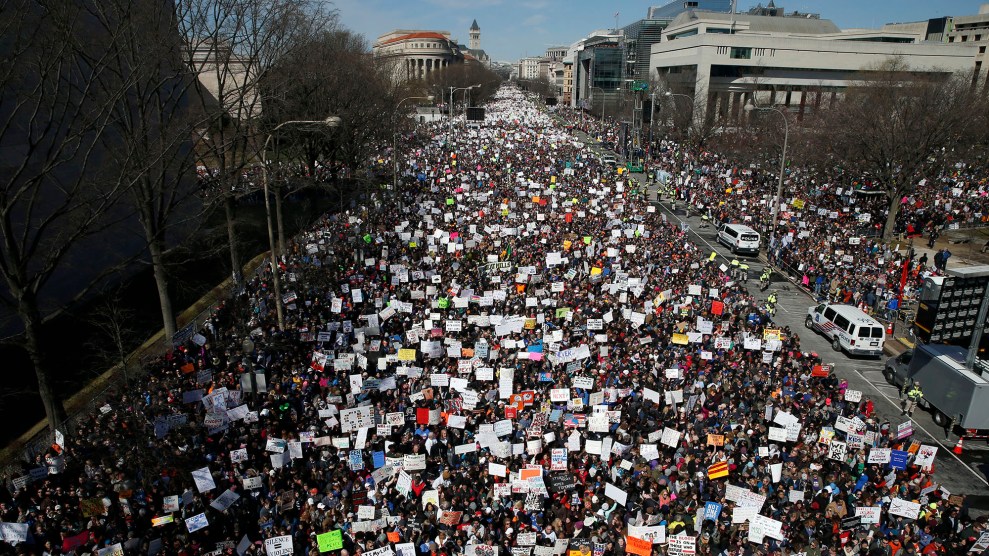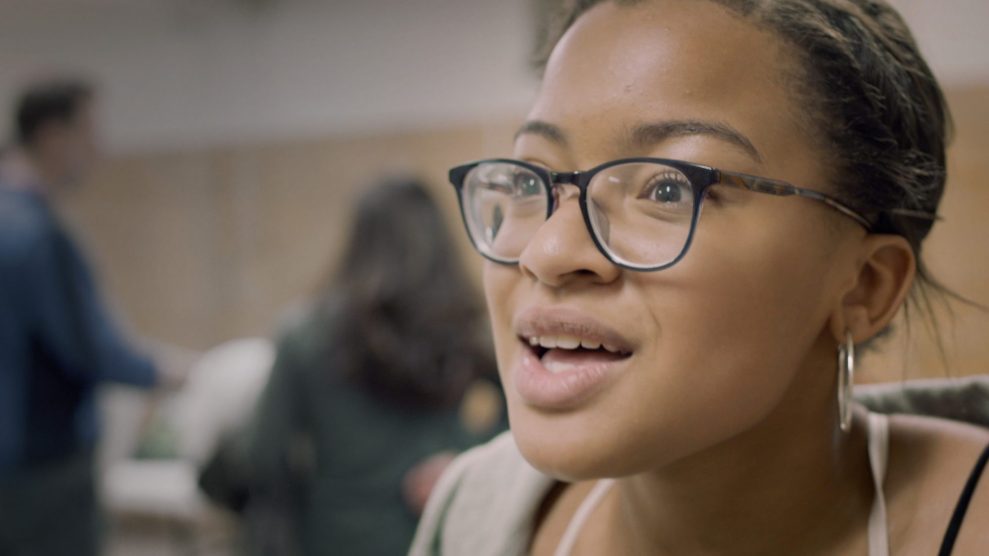It’s a long drive from Las Vegas, Nevada, to Salt Lake City, Utah, about six hours of plains, canyons, mountains, and time to think. Royce Christensen, a 22-year-old survivor of the Vegas Strip massacre last October, has a lot on his mind. He’s on the road today to join the March for Our Lives in Salt Lake on Saturday, his first gun safety protest. “I’m glad that this group that we’re going down to meet, they’re still pushing for change. They haven’t given up,” he says of the young activists who have organized what has become a nationwide movement for gun safety laws in the wake of the Parkland, Florida, high school shooting that killed 14 teenagers and 3 adults. “It has momentum. There are enough people involved in this that it’s going around every major city.”
Christensen comes from a family of security guards. He was working the Route 91 musical festival when a gunman perched in the nearby Mandalay Bay hotel rained bullets down on the crowd of more than 20,000. A little over a month later, a man opened fire in the First Baptist Church in Sutherland Springs, Texas, killing 27. Christensen says he’s tired of seeing mass shootings happen one after another—and nothing changing. His views are measured, but he knows he wants the minimum age for buying an assault-style weapon raised to 21 as well as a ban on bump stocks, which the Las Vegas shooter used to increase his rate of fire. “I may not agree with everything they say—all of the fast options they offer, the severity of the gun control—but I agree that something needs to be done, and I will hop aboard something that looks like it will finally get something done,” he says. “I don’t mind if it’s a small thing, but something is better than nothing.”
Mother Jones first met Christensen and his mother Darla at a candlelight vigil two days after the Las Vegas shooting. With the Mandalay Bay looming in the background, he told his story: How he’d felt bullets whizz past him, kicking up shards of aluminum that landed in his hair as the they hit the stage; how he’d tried to keep people calm and hidden; and how, once the shooting stopped, he had to walk through “a maze of bodies” to leave the concert grounds. He’s had nightmares ever since, and now sees a therapist once a week and is taking medication for post-traumatic stress. Very slowly, he is getting better.
Now he’s in a car with his mother and father, driving to Salt Lake City to meet with his fiancée to walk together in the March for Our Lives. Thousands are expected to join them. Marches are planned throughout the country, including in Washington D.C., where students from the Marjory Stoneman Douglas High School will hold a rally that’s anticipated to draw as many as 500,000 people.
“It’s hard to know how to feel having the title of being a survivor of the single worst mass shooting in recent US history,'” Christensen says. “I felt like I needed to go push myself to make something happen, and seeing this opportunity to join something that seemed to actually be gaining traction, that seemed to be gripping onto the steps of the government for once, I needed to be a part of something to help keep pushing it forward.”
“I want mine to be the worst mass shooting in history,” he says. “I don’t want there to be something worse coming along.”










